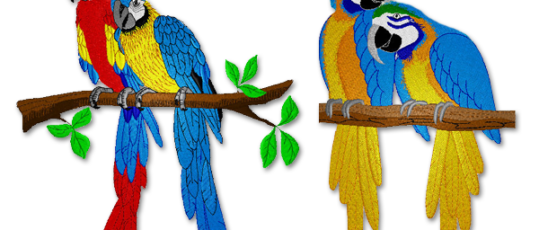Simplifying the Art of Embroidery Digitizing: Step-by-Step Guide
As innovation continues to development, the digitization process has become a lot more accessible, permitting fanatics to bring their elaborate designs to life with ease. In this overview, we will certainly decipher the intricacies of embroidery digitizing, damaging down each action systematically to enhance the process and equip both newbies and experienced embroiderers alike.
Understanding Embroidery Digitizing Software Program
Embroidery digitizing software program acts as a crucial tool for transforming intricate styles into electronic formats compatible with needlework equipments, helping with precise stitching and personalization. This specific software application allows users to import numerous photo documents formats, such as JPG or PNG, and convert them right into needlework machine-readable formats like DST, EXP, or PES - Digitizing for Embroidery. By utilizing features like stitch editing, underlay choices, and string color selection, digitizing software makes it possible for customers to manage every aspect of the layout procedure
In addition, progressed embroidery digitizing software uses tools for producing complex designs, readjusting stitch density, and including intricate information. Customers can also sneak peek the style before stitching it out, making certain accuracy and minimizing errors. In addition, several software application give automated features that aid simplify the digitizing procedure, conserving effort and time.
Understanding the capacities of embroidery digitizing software program is important for achieving high-grade cause needlework tasks. By understanding this tool, embroidery lovers and specialists can unleash their creative thinking and bring complex layouts to life with accuracy and efficiency.

Choosing the Right Layout Documents
After familiarizing on your own with the capacities of embroidery digitizing software program, the following vital step in the process is picking the appropriate style documents for your task. Digitizing for Embroidery. When selecting a layout data for embroidery digitizing, it's essential to consider the intricacy of the design, the dimension of the final item, and the kind of fabric you will be working with
For detailed styles with fine information, a high-resolution photo or vector data is recommended to make certain that the needlework device can properly duplicate the style. Furthermore, the dimension of the last product plays a substantial duty in choosing the appropriate design data. Larger designs may require greater resolution documents to preserve clearness and intensity.
Furthermore, the sort of textile you will be embroidering on influences the selection of layout data. Different materials might require changes in the design file to ensure that the stitches are effectively lined up and the style shows up as meant. By very carefully choosing the best style documents based upon these aspects, you can establish yourself up for an effective embroidery digitizing process.
Digitizing Tools and Methods
Making use of specialized software and precision methods, digitizing tools are important in transforming complex designs into embroidery-ready files. Needlework digitizing software, such as Wilcom, Hatch, or Embrilliance, gives the necessary platform to convert art work right into stitch data. These programs offer functions like stitch editing and enhancing, padding alternatives, and text devices to ensure the design equates effortlessly onto textile.
Among the essential methods in digitizing is developing a clear course for the needlework device to adhere to. This involves digitizing each element of the style with precision, determining stitch types, thickness, and instructions. By utilizing devices like digitizing tablets or software-specific plugins, embroiderers can attain a high degree of accuracy in their digitized styles.
Additionally, mastering the art of underlay stitching is important for producing top quality needlework. Underlay stitching maintains the material and produces a foundation for the layout, guaranteeing that the end product is both navigate to this website visually enticing and durable. By recognizing these digitizing tools and strategies, embroiderers can raise their craft and bring intricate styles to life with precision and efficiency.
Personalizing Stitch Kinds and Instructions
Having actually established a foundation in digitizing devices and strategies, a critical facet beforehand embroidery craftsmanship exists in tailoring stitch kinds and directions with accuracy and function. The option of stitch types can significantly influence the general appearance and appearance of the navigate to this site stitched layout. Satin stitches, recognized for their smooth and glossy finish, work well for creating boundaries and text. On the other hand, fill stitches are suitable for covering larger locations effectively. By strategically incorporating these stitch types, embroiderers can attain deepness and dimension in their styles.
Moreover, the instructions of stitches plays an essential role in enhancing the aesthetic appeal of the final embroidery. By exploring with different stitch angles and patterns, embroiderers can bring their styles to life with exceptional detail and complexity.
Screening and Refining Your Digitized Design
To make sure the accuracy and top quality of your digitized layout, detailed screening and improvement are important action in the needlework digitizing process. Once you have actually completed the digitization of your style, it is vital to test it before waging the real embroidery. Checking allows you to identify any type of prospective issues such as thread breaks, stitch thickness issues, or layout distortions that may impact the outcome.

After testing, it is very important to improve your digitized style based on the feedback from the test sew-out. This might involve tweaking sew setups, changing thickness, or making right here adjustments to the total style to attain the wanted end result. By repeating with testing and improvement, you can fine-tune your digitized design to excellence before relocating onward with the actual needlework process.
Verdict
To conclude, grasping the art of needlework digitizing requires a detailed understanding of the software, picking the appropriate style documents, making use of digitizing devices and strategies, tailoring stitch kinds and directions, and screening and improving the digitized design. By complying with these steps, embroiderers can simplify the digitizing process and produce premium stitched styles with accuracy and efficiency.
 Soleil Moon Frye Then & Now!
Soleil Moon Frye Then & Now! Richard Thomas Then & Now!
Richard Thomas Then & Now! Bill Murray Then & Now!
Bill Murray Then & Now! The Olsen Twins Then & Now!
The Olsen Twins Then & Now! Ricky Schroder Then & Now!
Ricky Schroder Then & Now!